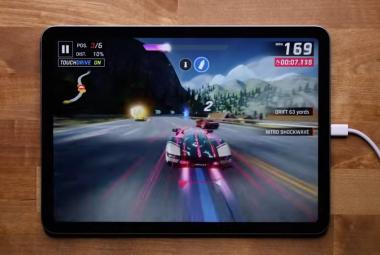Visual excerpt from the YouTube channel JerryRigEverything. All rights belong to the original creator.
In the fast-paced world of smartphones, Google’s Pixel series has long been a staple, known for balancing sturdy construction with a flexible design. However, the brand's reputation has been tested by notable exceptions like the Pixel Fold and Nexus 6P, which deviated from this standard. Today, we put the aesthetically impressive Pixel 8 Pro, in its captivating "Bay" blue color, through a rigorous endurance test to determine whether it can truly survive seven years of wear and tear, as Google boldly promises.
The Pixel 8 Pro is immediately eye-catching, with its sleek satin finish and striking blue hue. Upon closer inspection, its back appears to be polished plastic, though it is, in fact, glass. Google’s claim of providing seven years of software updates for this device prompts us to investigate if the Pixel 8 Pro can handle such longevity in terms of durability. With its design, functionality, and overall build, the phone could potentially stand the test of time, but does it live up to expectations?
One of the first aspects to consider is the device's screen. The Pixel 8 Pro boasts a flat glass display, dubbed the Super Actua display, which is said to be Google's brightest to date. Protected by the highly durable Gorilla Glass Victus 2, the screen is expected to withstand significant abuse. However, even with this protection, the glass shows signs of wear under pressure. During testing, the screen faces scratches at a level 6 hardness, with deeper grooves appearing at level 7. While not as tough as Apple’s Ceramic Shield, the screen holds up reasonably well compared to standard tempered glass. The display remains a strong feature, though its resilience may not be on par with the toughest competitors in the industry.
At the front of the device, the Pixel 8 Pro integrates a 10.5-megapixel hole-punch camera, which doubles as a face recognition feature. This setup contributes to the phone's overall sleek design, with the front also featuring slim antenna lines and a discreet earpiece. The face recognition feature is a key selling point, providing added security and ease of use. However, the delicate nature of these components raises concerns regarding their longevity and performance after years of use.
Moving to the body, the Pixel 8 Pro is constructed from 100% recycled aluminum, which is a commendable environmentally friendly choice. The frame of the phone reveals removable side buttons, a unique feature that sets the device apart from many competitors. These buttons, while functional, also highlight the phone's design flexibility. The Pixel 8 Pro also includes a plastic 5G antenna oval, offering solid connectivity, and it has earned an IP68 rating for water resistance, making it impervious to dust and capable of surviving immersion in water up to a certain depth. However, the phone does not feature expandable memory, which could be a downside for users with large media collections.
Durability-wise, the Pixel 8 Pro continues to impress. The back of the phone showcases a glass material that resists scratches, contributing to the overall robustness of the design. In a side-by-side comparison with the iPhone 15, another blue phone, the Pixel 8 Pro stands out as a solid contender in terms of build quality. However, it does fall short in one area: its wireless charging capabilities do not feature the magnetic alignment seen in Apple's design, which could affect the convenience of charging over time.
When it comes to the camera system, the Pixel 8 Pro is equipped with a powerful trio of lenses. The 50-megapixel main camera is complemented by a 48-megapixel wide-angle lens and another 48-megapixel telephoto lens, ensuring a versatile photography experience. There is also an infrared thermometer, which, while interesting, may not have widespread practical application for most users. This additional feature does, however, reflect Google’s willingness to experiment with new technologies in their devices.
One of the standout features of the Pixel 8 Pro is its Super Actua display, which offers a resolution of 1440p and an impressive 2,400 nits of brightness. This high-quality display delivers vivid, clear images, but during the durability tests, burn marks appeared after just 17 seconds of exposure to heat. Despite this, the device’s under-screen optical scanner continued to function normally, showcasing the Pixel 8 Pro’s resilience even in the face of potential damage.
The crucial part of the durability test involved bending the device. The Pixel 8 Pro was subjected to both front and back pressure, and while the phone emitted a creaky sound—reminiscent of a wooden chip—there were no signs of catastrophic damage. There were no cracks at the antenna lines, and the frame remained intact. Despite the creaking, the phone emerged from the stress test relatively unscathed, proving that it is structurally sound and capable of enduring everyday wear and tear.
In conclusion, the Google Pixel 8 Pro stands out as a resilient contender in the smartphone market, demonstrating impressive durability despite some vulnerabilities in its display and wireless charging system. As Google promises seven years of software updates, the real question is whether the Pixel 8 Pro can endure the long-term wear that comes with such an extended software lifecycle. With its strong build, robust features, and environmental consideration, the Pixel 8 Pro is a device that not only looks good but also has the potential to last for years to come. However, as with any phone, only time will tell whether it can truly live up to its promise of surviving seven years of daily use and continued software support.


















